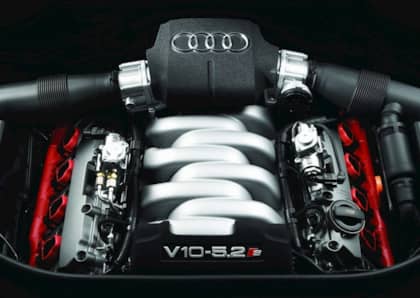Ute It Up, Aussie-Style: Smyth Performance Kits For VW, Subaru, and Dodge Sedans
The ute. This popular, ultra-practical Australian concept marries the open cargo area of a pickup truck with the handling and comfort of a coupe (linking the bed and the passenger area with common sheet metal), has never really caught on in the United States.
Sure, there've been pretenders—brief flirtations with El Caminos and Rancheros in the '60s and '70s, followed by the letdown of the Dodge Rampage in the '80s and the brief flash in the pan of the Volkswagen Caddy (not to mention whatever the Subaru Baja might have been). By and large, however, Americans haven't had the hots for "party in the front/business in the back" in their daily drivers in the same way as enthusiasts Down Under.
Still, there's a sizable market of customizers out there looking to park something different in their driveway. Pair that with the group of free-thinkers seeking to maximize the utility of their rides without having to step up into bro-truck territory, and you've got the makings of a profitable cottage industry—one that Smyth Performance has stepped up to serve.
One Hit After Another
Smyth Performance was founded by Mark Smith, who was one of the original founders of Factory Five Racing in the early 90s, eventually selling his interest in the popular kit car company in 2012 order to create Local Motors, which embraced 3D printing and a more modern DIY ethos to bring vehicles like the Rally Fighter into the world.

Rather than returning to the world of Cobra and GT40 replicas, Smyth Performance keeps with its owner's ethos of doing things differently than everyone else. In this case, that means taking Volkswagen Golfs and Jettas, Audi A4s and S4s, Dodge Chargers, Subaru Imprezas and WRXs, and even the VW New Beetle (later in 2019), and turning them into daily-drivable utes.
Cheap And Useful
If that seems like an unusual grouping of vehicles to qualify for ute kit status, well, you're right. Smith started with the Jetta because contractually, it was the only vehicle he was allowed to modify during the five-year non-compete clause in his sale agreement for Factory Five. In partnership with engineer Michael Gallant, the very first Smyth Performance ute kit was developed for the 1999.5-2004 Jetta (and by extension its Golf platform-mate) shortly after the company was founded.
Aside from the fact that you get to live your mullet-headed ute dreams with either Hemi, turbo flat-four, or 1.8T power, what else makes the Smyth Performance kits special? For one thing, they're dirt cheap: at $3,500 or so for the Jetta setup, it's nowhere near as expensive as, say, a completed Factory Five Cobra or Rally Fighter.

Then there's the design ethos behind it. Smith and Gallant claim it takes a maximum of 40 hours for the average mechanic to assemble the kit, including cutting away the parts of the car (read: the rear passenger area) that are no longer needed. As an added bonus, no welding is required to complete the Smyth installation, which opens it up to a much wider ranger of shade-tree mechanics. Paint, however, will be an added cost for anyone who doesn't dig a two-tone black look on the rear half of their vehicle.
As an added bonus, no safety features need to be disabled while installing the kit, which means that airbags, ABS, and everything else a modern car comes with remain part of the package.
Why Go Ute?
It's clear that Smyth Performance kits add a more-than-unusual sense of style to the average Volkswagen or Subaru sedan. Aside from being different, and of course being able to haul as much plywood as you want, are there any other benefits to the ute conversion?
There's fuel mileage, of course. Any small-displacement, turbocharged four-cylinder engine motivating a sedan-based platform rather than a full-size or mid-size pickup is going to consume much less fuel, especially in city driving, than a traditional truck.

Then there's the Smyth claim that their kits significantly improve the torsional stiffness of a given vehicle, a fact that owners have readily cited after driving their completed cars. Add to this a weight reduction, which can slice as much as 200 lbs of mass from the equation once those doors, roof, and all that glass have been removed. The kits themselves replace the rear metal with fiberglass quarter panels, although the tailgate remains steel, and the small integrated quarter windows are made from lightweight Plexiglas. The bed maintains the lighter-is-better motif with its aluminum construction.
If you don't feel like building a ute yourself, Smyth Performance also offers several completed cars for sale. It's a mix of customer vehicles and those that actually belonged (at one point) to Mark Smith himself, and while it's not a long list it does provide you with the opportunity to head to Massachusetts, hit up the Smyth HQ, and get a first-hand appreciation for what is possible with the kits prior to putting in a deposit.











